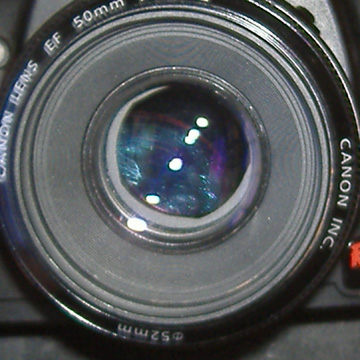Before we get into the photography, there's a few other bits of housekeeping to discuss.
First of all, I am delighted to be the recipient of a Sunday Shout-out by Meghan of AllMediocre.com. If you haven't checked out AllMediocre, you should. Its a collection of lots of entertaining blogs by regular folks who are pretty funny. Tons of good stuff there. Secondly, if you made it here from Meghan's link, thanks for stopping by. The links to earlier posts in the photography series are over to the side there. feel free to say hi and ask questions if you're curious. if you're just reading for the first time, this series of posts is aimed at folks who got tired of crummy shots from their digital point-and-shoots and bought nice digital dslr's only to find out they have no idea what most of the buttons on their new camera do.
and lastly, since some people seem to have had some luck begging for cameras online, Canon... if you're listening i'd LOVE to tell anyone reading this blog how wonderful my new 24-70L glass is. Feel free to send it to me at any time. mkay, thanks.
Aperture
Ok, so we said there were three components that could be manipulated to control exposure. I wavered back and forth for a while trying to decide on which one to start with, but in the end decided on aperture, mainly because i'd already taken the demonstration pictures. And aperture can be the most confusing (at least it was for me) so you can chew on this one for a while without everything else already clouding things up.
The shutter is the part of the camera lens that opens and closes when you take a picture. Aperture (also known as f-stop) refers to how large, or small, that opening is. It is indicated by a number, often preceded by the letter f. for example f2.8 or f16. To demonstrate what it is, do this... Put your camera on aperture-priority (dust off the manual if you need to) and set your aperture to the lowest number you can. My 50mm goes down to 1.8... 3.0 is fine, so is 5.6. whatever.
Now, hold it out in front of you so you are looking into the lens. Like you're going to do that thing where you hold the camera out with the lens facing you, to take a self-portrait . Then press the shutter button and watch what happens inside the lens. did you see the shutter close? notice the size of the opening in the center. now change your aperture to the highest number it will go to, most likely 22. do the same thing. see the difference??
i used to know what the aperture actually was. its not really important so i forgot it... it has something to do with the diameter of that opening and how it relates to the focal length of the lens, in other words "math stuff." not important. what is important to know is that the smaller the number, the bigger the opening is. for instance, when you looked in your lens, the opening at f3.5 (or f5.6) should have been significantly bigger than it was at f22. right? remember that... it will make things easier later. just in case you didn't do the experiment, this is what it would have looked like.
So how does that relate to exposure?? Light. If all other setting remain the same, a larger aperture (i.e. bigger opening but SMALLER number) will let in more light than a smaller aperture (i.e. smaller opening but bigger number). so if your camera is set to automatic and its a very bright sunny day, your camera will likely choose a smaller aperture. think about it... lots of light means risk of over exposure. to cut down the light getting in, we make a smaller opening. this is called "stopping down." think of it like your eye. in very dim lighting your eye dilates (to approximately f2.3) and in bright daylight in constricts, or stops down, if you will.
time out... are you thoroughly confused yet? feel free to ask for clarification because it only gets murkier from here.
So why change your aperture? Why not just let the camera pick whatever aperture it thinks is right for the lighting situation? Because changing the aperture has a huge impact on the final result of your picture. Aperture influences how much of the picture is in focus, and how much is out of focus. This is called depth-of-field. We'll save that for next time, so as not to overwhelm...
Continue to Part 4: More aperture
Subscribe to:
Post Comments (Atom)



2 comments:
ooo, lucky me...
after my husband's vacation is over and he is back at work...i'm gonna have to run back and read through these! i've been looking for someone to make my picture taking better...or do i have to be the one to do that???
Yep, a little confused, but I'm going to experiment and I have faith I can figure it out. The problem is focusing - my brain, not the camera!
Post a Comment